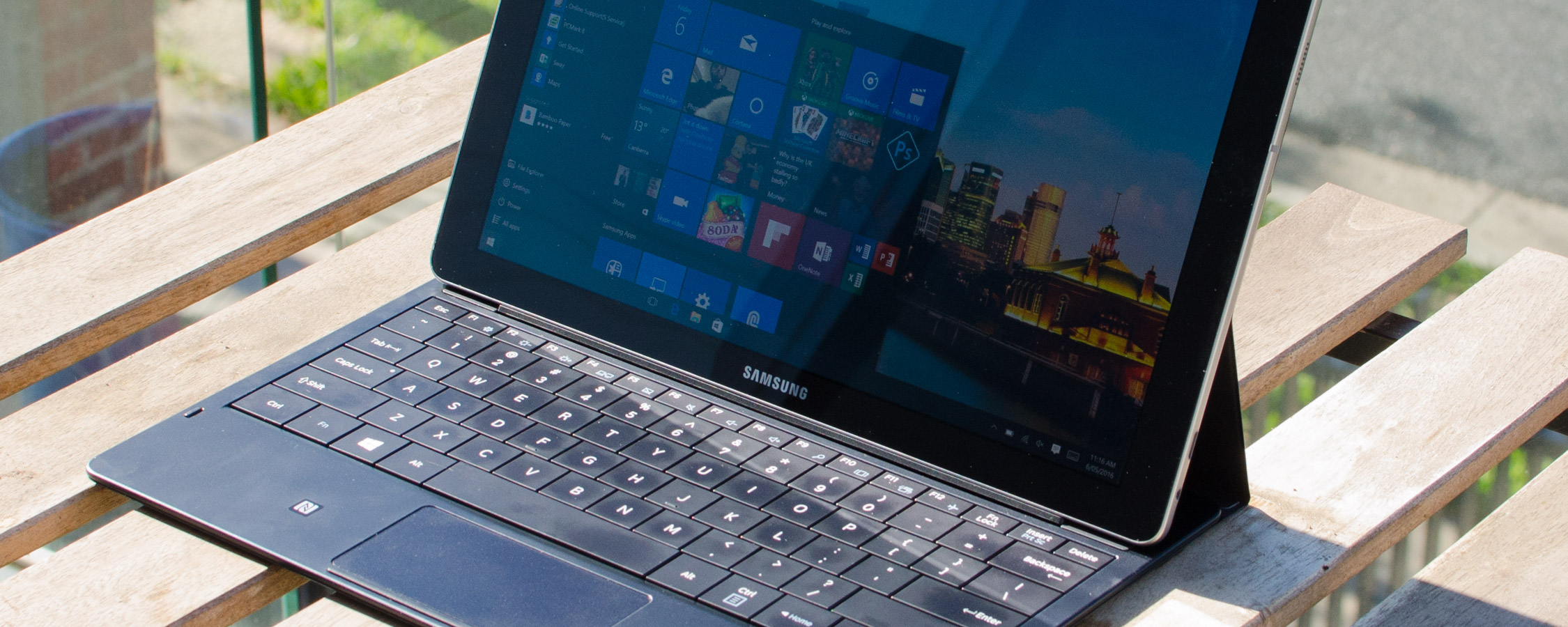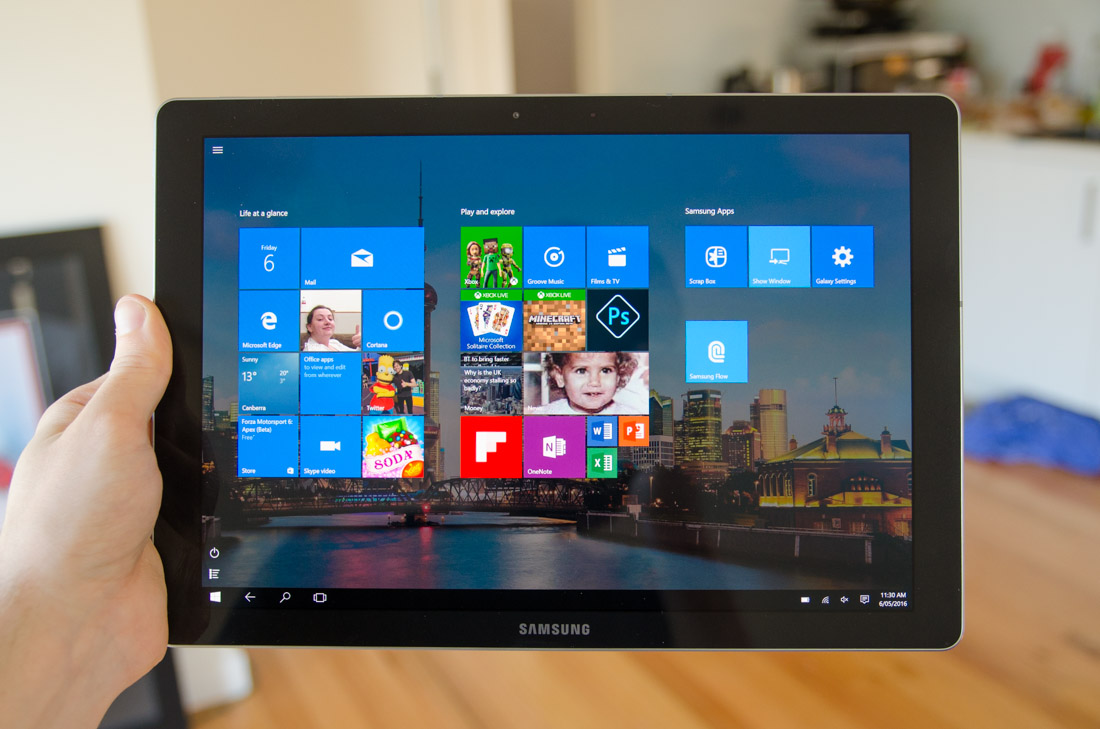Display and Keyboard Cover
The Samsung Galaxy TabPro S comes with a vibrant, 12.0-inch Super AMOLED display with a resolution of 2160 x 1440, equating to a pixel density of 216 PPI. This panel isn't as high resolution as the 2736 x 1824 display Microsoft uses in the Surface Pro 4, but the clarity and sharpness is still great for a panel of this size, easily surpassing what you'd get from a 1080p-class resolution.
The use of an AMOLED display here does bring a range of benefits, including infinite contrast, blacks deeper than anything capable from an LCD, and amazing viewing angles. Due to the relatively low pixel density of this display compared to an AMOLED on a smartphone, Samsung has managed to use a standard RGB subpixel matrix rather than PenTile, which means you won't see any fringe effects from a lower-than-normal subpixel resolution.
The color quality is exactly what you'd expect from a Samsung AMOLED: oversaturated, but vibrant and visually attractive. The color gamut of this display is easily good enough to support Adobe RGB, but for some reason there is no supported color profile, meaning this tablet is only compatible with sRGB colors. As is usually the case with gamut mismatches like this, displaying sRGB colors on a display with an Adobe RGB-like gamut increases saturation across the board, causing more vibrant imagery at the expense of accuracy.
Samsung does have some display options available in their Galaxy Settings app, mirroring what's available on their smartphones. If you want to use the TabPro for color accurate work, switch it into Basic mode, which is a very accurate sRGB mode. AMOLED Photo is supposed to mirror Adobe RGB support, but the lack of color profiles doesn't make this the case.
The keyboard cover that comes with the Galaxy TabPro S is a bit of a mixed bag. I'll start with the positives, though, which mostly relate to the typing experience. The keyboard spans the entire width of the cover, which makes each key large and easy to hit. With standard-width shift, enter and backspace keys, there are no issues with truncated or cramped keys, and it's good to see an entire row of function keys too.
The travel distance of each key is limited due to the thinness of the cover, but the keycaps themselves don't feel mushy, which gives the keyboard a good tactile feel. I still prefer the typing experience on a full-sized laptop keyboard due to the slightly better travel distance you usually get, although I was still reasonably impressed with what the TabPro keyboard cover brings.
The trackpad on the cover is passable. The space allocated to the trackpad is small due to the limited space available, which makes it more cramped than a standard laptop trackpad. The tracking performance is fine: not as good as the best trackpads on the market, and not as bad as an ELAN trackpad. It works for basic mouse actions and that's all you really need.
My main issues with the cover mostly relate to the stand mechanism and the build quality. While the tablet itself is made from premium materials like metal and glass, the cover has a faux-leather design that feels and looks cheap. The plastic used around the keyboard feels just as good as the plastic on the back of the tablet, but I wasn't impressed by the leather finish on the outside.
The tablet stand that's built into the keyboard cover is a poor substitute for the Surface Pro's built-in kickstand. The stand only folds into two angles, both of which are completely unsuitable for use on a lap. The more upright position is barely usable on a desk; it's slightly too upright for my liking, and although the screen is still viewable, I'd have preferred if the tablet could be tilted further back. It can't, and that limits the TabPro's usefulness in its 'laptop' mode.
The way the tablet attaches to the keyboard isn't particularly great either. On the Surface Pro 4, you simply open up the cover, open the kickstand, and away you go. With the TabPro S, you have to open the cover, lift the bottom of the tablet away from the cover, and slot it into the magnetic docking strip. Occasionally the tablet didn't dock properly and wouldn't work straight away. And then to change the angle of the stand you have to mess around with the folds on the back. It's far from an ideal solution and Microsoft clearly has a better system for the keyboard cover.







